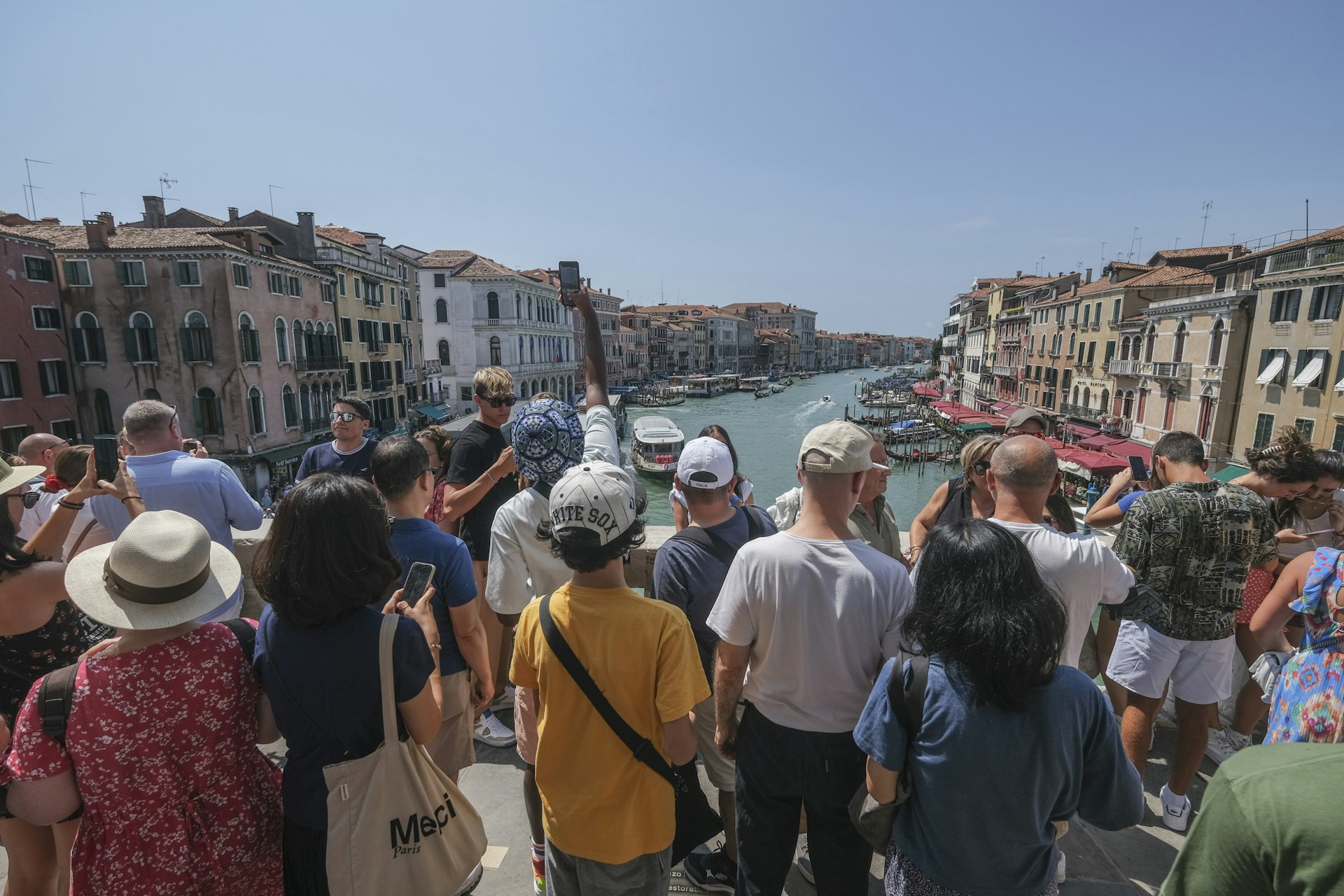As Venice continues to struggle with mass tourism, and post-pandemic numbers show no sign of decreasing, Unesco has sounded another warning bell.
The World Heritage Committee, which has listed “Venice and its Lagoon” on its World Heritage list since 1987, has drafted a resolution to add the city to its World Heritage in Danger list. It will be voted on in September.
The committee warned of “irreversible changes” to the city and lagoon, and “continuing deterioration due to human intervention, the impacts of climate change and mass tourism.”
It said that Italy has not done enough to preserve the area, citing a “lack of significant progress in addressing the complex issues.”
Managing overtourism
Venice’s overtourism problem is well known, with around 30 million visitors per year in a city of under 50,000 residents. Locals are increasingly deserting the city as the economy becomes ever more tourism-centric, while there is a housing shortage due to the thousands of Airbnbs in the city. A proposed tax on day trippers, mooted since 2019, has yet to be enacted.
Cruise ships were banned from sailing through the city center in 2021, but they are still allowed to dock in the lagoon – meaning that the ecological damage that these vessels cause sailing through the shallow lagoon waters remains unchanged.
Unesco, which deals with the Italian state rather than the Venetian authorities specifically, said that there has been a “lack of significant progress” and a “lack of strategic vision” in tackling the urgent issues and called proposed measures “insufficient.”
The committee states that it hopes that adding Venice to the list will finally galvanize change. If added, it will keep its original World Heritage listing, too.
Sending a message to the world
Melissa Conn, director of the Venice office at Save Venice, a non-profit that restores and preserves artworks in the city, agreed. “I don’t think this is a question of a right or wrong decision, but a statement that needed to be made to further underscore the fragile nature of Venice and its artistic patrimony,” she told Lonely Planet.
“The city and national government have taken great strides in the last two years to protect Venice, with the activation of the MOSE flood gates and new rules for the passage of cruise ships in Bacino San Marco [through the city center]. There is no easy solution, and addressing the difficulties that Venice faces will always have to be a priority for future administration.
“Venice should not give up hope.”
Valeria Duflot, co-founder of Venezia Autentica, which promotes sustainable tourism in Venice, said that she is in favor of adding the lagoon to the list.
She said it would “send a strong message to the world…that tourism and human economic activity driven by growth can destroy the socio-economic fabric of our cities and communities.”
“It would also serve to illustrate the intimate link – demonstrated by science – between travel and tourism and climate change,” she added.
“What is happening in Venice is bound to happen everywhere else there is tourism if we do not transform our mindsets and practices that elevate extractive growth over…the wellbeing of places, people and what matters to them. We all need to step up our game.”
Repeat offender

It’s not the first time the lagoon city has been threatened with an addition to the “in danger” list. In 2014, Italy was given two years’ notice to change the direction of the situation in the city. And in 2021, a draft resolution to add Venice to the endangered list, which ultimately failed, cited a “lack of overall vision and low efficiency of… management.”
If added, it will join two other European cities. Vienna’s historical core was added to the danger list in 2017, while Odesa in Ukraine was added in 2023, following continued attacks by Russia.
A spokesperson for Venice city council said in a statement that the council will “carefully read the proposed decision… and will consult with the government, which is the State Party with which Unesco relates.
